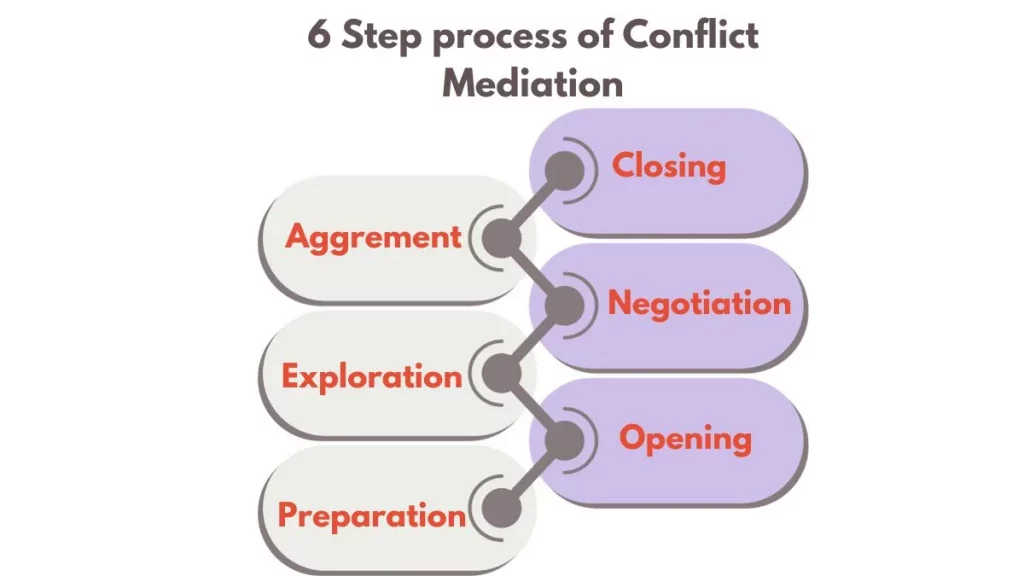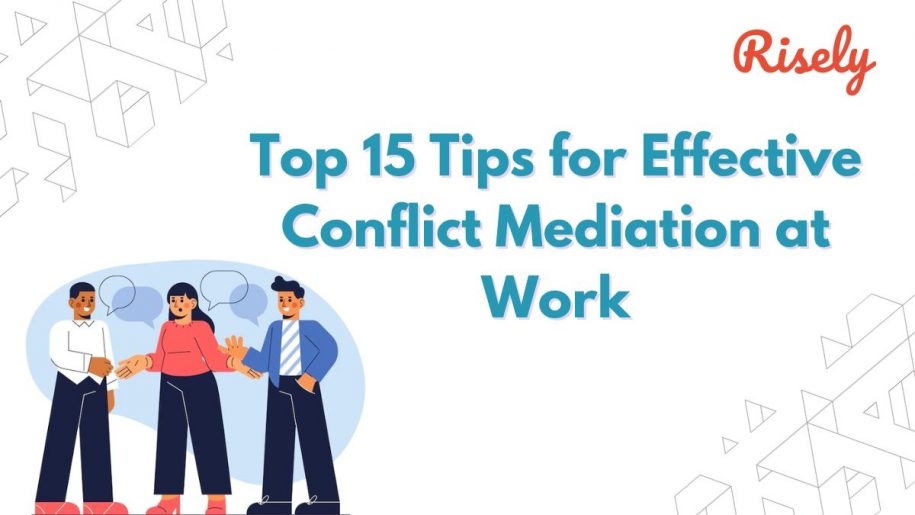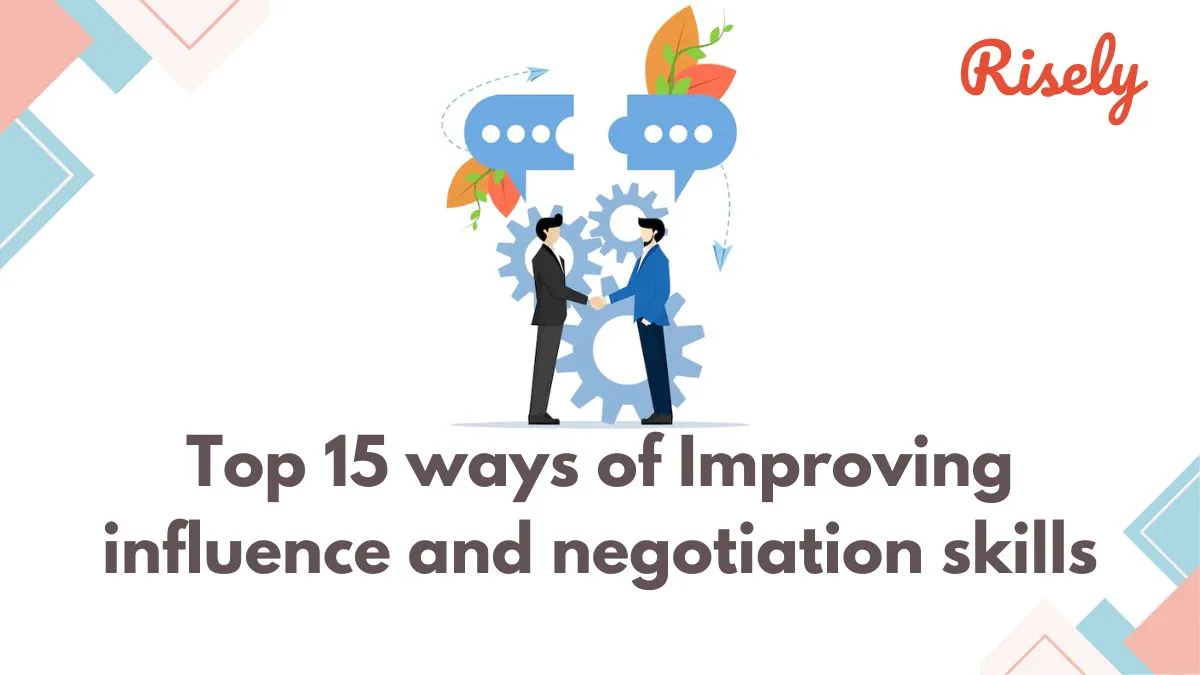Top 15 Tips for Effective Conflict Mediation at Work
As a manager or leader, you might be familiar with the conflicts that arise in the workplace. It’s not always easy to deal with them, but it is essential for maintaining healthy employee relations and productivity. One way to handle these conflicts is through mediation. In this blog post, we will talk about conflict mediation and its process. We will also provide valuable tips on effectively conducting mediation at work to ensure healthy employee relations. With this guide, you can promote a peaceful and productive work environment for your team.Understanding Workplace Conflict Mediation
Workplace conflict mediation is a structured and collaborative process designed to help individuals or groups resolve disputes and conflicts constructively and mutually satisfactorily. It involves the intervention of a neutral third party, a mediator, who facilitates communication and negotiation between the conflicting parties. The goal of workplace conflict mediation is to reach a resolution that addresses the underlying issues and promotes a more harmonious and productive work environment. Here are the key elements and principles of workplace conflict mediation:- Neutral Third Party: The mediator is an impartial and trained professional who does not take sides or impose solutions but assists the parties in finding their resolution.
- Voluntary Participation: Participation in mediation is typically voluntary, meaning all parties involved must agree to engage in the process. It is a non-coercive approach.
- Confidentiality: Mediation is a confidential process, which means that discussions and information shared during mediation are generally not disclosed to anyone outside the mediation session unless required by law.
- Informal Setting: Mediation often occurs in a relaxed and private setting, where the parties can openly discuss their concerns and interests.
- Open Communication: Mediation encourages open and honest communication between the conflicting parties. Participants are encouraged to express their viewpoints, concerns, and feelings.
- Active Listening: The mediator helps the parties actively listen to and understand each other’s perspectives.
- Problem Solving: Mediation focuses on finding mutually acceptable solutions to the conflict. This may involve brainstorming ideas, exploring options, and considering the interests of all parties involved.
- Win-Win Solutions: Mediation aims to achieve win-win outcomes where both parties feel their needs and concerns have been addressed, leading to a more sustainable resolution.
- Empowerment: Mediation empowers individuals to have a say in resolving their conflicts rather than imposing solutions.
- Timely Resolution: Mediation is often a quicker and more cost-effective way to resolve conflicts compared to formal grievance procedures or litigation.
Other Interesting Reads
The Process of Conflict Mediation at Work
The process of conflict mediation at work is a voluntary approach aimed at resolving workplace conflicts. It involves the involvement of a neutral third-party mediator who facilitates discussions between the conflicting parties. This process’s primary focus is understanding the nature of the dispute and finding common ground for resolution. Conflict mediation at work typically follows a structured process aimed at helping conflicting parties find a mutually agreeable resolution to their disputes. This process can be broken down into six essential steps: STEP 1: PREPARATION: The mediation process begins with preparation. The mediator typically meets with each party separately to understand their perspectives, concerns, and desired outcomes. This individual consultation allows the mediator to assess the conflict’s nature and complexity and establish a rapport with each participant. It’s also an opportunity to explain the mediation process and set ground rules for the upcoming session. STEP 2: OPENING SESSION: In the first joint session, all parties involved in the conflict come together with the mediator. During this session, the mediator reiterates the ground rules, emphasizes the importance of respectful communication, and outlines the mediation process. Each party can provide their perspective on the issue and express their feelings. This stage allows participants to vent their frustrations and begin to understand the other party’s viewpoint. STEP 3: EXPLORATION: In this step, the mediator guides the conversation toward a deeper exploration of all parties involved’ underlying issues and interests. Participants are encouraged to actively listen to each other’s concerns and ask clarifying questions. The mediator may use various techniques to help parties reframe their perspectives and uncover common ground. STEP 4: NEGOTIATION: Once the issues are thoroughly explored, the negotiation phase begins. Parties work together to generate potential solutions to the conflict. The mediator helps facilitate this process by encouraging creative thinking and brainstorming. The focus is on finding compromises and mutually beneficial agreements that address the core concerns of all parties. STEP5: AGGREMENT: When parties reach a consensus on a resolution, the mediator assists in formalizing the agreement. This may involve drafting a written contract that outlines the terms, responsibilities, and timelines for implementing the agreed-upon solutions. Parties are encouraged to review and sign the agreement, demonstrating their commitment to follow through with the resolution. STEP 6: CLOSING: The final step in the mediation process is the closing session. During this session, the mediator summarizes the agreed-upon solution and any action steps to be taken. Participants can express their thoughts and feelings about the process and the outcome. The mediator also discusses follow-up procedures, such as checking the agreement’s progress. Here is an insightful read about the top strategies for dealing with difficult people at work. We’re sure you don’t want to miss this one!
Common Challenges in Conflict Mediation
Dealing with conflict mediation can be a challenging task for managers. It is essential to understand the steps and characteristics of conflict mediation. However, we also know that nothing comes without their challenges. So, we must be aware of the common challenges that come our way in being an effective mediator at work. Here are some of those challenges. Have you faced any of these personally?- Emotional Intensity: Conflicts often involve intense emotions, which can be challenging. Participants may be angry, hurt, or defensive, hindering constructive communication. Mediators must create a safe and supportive environment to help parties navigate their emotions.
- Power Imbalance: In some cases, there may be a significant power imbalance between the parties involved. This can occur due to differences in authority, seniority, or influence within the organization. Mediators must address this imbalance to ensure a fair process and avoid one party feeling disadvantaged.
- Resistance to Mediation: Not all parties may be willing to participate in mediation, or they may engage reluctantly. Overcoming resistance and convincing all parties of the benefits of mediation can be challenging. Some individuals may prefer more adversarial approaches like litigation.
- Lack of Trust: Trust is essential for successful mediation. In many conflicts, trust between the parties has eroded, making it difficult to establish a constructive dialogue. Building trust takes time and effort, and mediators must work to rebuild it during the process.
- Complexity of Issues: Some conflicts involve multiple parties, intertwined issues, and a long history of grievances. Untangling these complexities and addressing each party’s interests and concerns can be challenging. Mediators must have strong problem-solving skills.
- Cultural and Diversity Issues: Conflicts in diverse workplaces can be influenced by cultural differences, language barriers, or misunderstandings. Mediators must be culturally sensitive and aware of these dynamics to ensure effective communication and resolution.
Tips for Conducting Mediation at Work
Mediation at work requires skill, neutrality, and a structured approach to help conflicting parties resolve. Here are ten tips for effectively conducting mediation in a workplace setting:- Establish Trust and Rapport: Begin by creating a safe and welcoming environment where all parties feel comfortable sharing their perspectives. Building trust is crucial for effective mediation.
- Explain the Process: At the outset, provide a clear overview of the mediation process, including its voluntary nature, confidentiality, and the role of the mediator. Ensure everyone understands the ground rules.
- Active Listening: Actively listen to each party’s concerns, feelings, and perspectives without judgment. Show empathy and validate their emotions to foster open communication.
- Stay Neutral: Maintain strict neutrality throughout the mediation. Avoid taking sides or showing bias, and refrain from offering personal opinions or solutions.
- Ask Open-Ended Questions: Use open-ended questions to encourage parties to express themselves fully and explore their interests. This helps uncover underlying issues and potential solutions.
- Summarize and Reflect: Periodically summarize what you’ve heard to ensure clarity and show that you understand each party’s point of view. Reflect on their feelings and concerns to them to validate their experiences.
- Manage Emotions: Help parties manage their emotions constructively. Suggest taking a break to cool down and refocus if emotions become overwhelming.
- Foster Communication: Encourage direct communication between the conflicting parties. Avoid becoming a go-between or interpreter; instead, facilitate their dialogue.
- Explore Interests: Dig deep to identify each party’s underlying interests and needs. Encourage them to consider the bigger picture and explore potential win-win solutions.
- Maintain Control of the Process: While allowing parties to own the outcome, ensure that the mediation process stays on track and focuses on resolving the conflict. Gently redirect conversations if they veer off course.
- Document Agreements: If a resolution is reached, document it clearly, including the agreed-upon actions, responsibilities, and timelines. Ensure all parties understand and consent to the written agreement.
- Follow-Up: After the mediation, follow up with the parties to check on the progress of the resolution and offer any necessary support or further mediation if issues persist.
- Continuous Improvement: Reflect on your mediation sessions and seek opportunities for improvement. Training and ongoing education can enhance your mediation skills and effectiveness.
- Stay Informed: Stay up-to-date with the latest mediation techniques, best practices, and relevant laws and regulations that may impact workplace conflicts.
- Maintain Confidentiality: Uphold the confidentiality of the mediation process, ensuring that discussions and agreements remain private unless there are legal exceptions.
Conclusion
In conclusion, conflict mediation is an essential skill for managers and leaders in the workplace. It helps promote healthy employee relations, resolve conflicts, and improve the work environment. Managers can effectively address conflicts and find mutually beneficial solutions by understanding the conflict mediation process and following the necessary steps. However, it is essential to acknowledge that conflict mediation can sometimes be challenging. Managers can overcome difficulties and facilitate successful resolutions by being prepared, staying neutral, and actively listening to both parties. By prioritizing conflict mediation, managers can create a harmonious and productive work environment for their team.Ace a mediation at work with conflict management skills.
Master the art of conflict management by reviewing your skills with a free assessment now.
Other Related Blogs
Top 15 ways of Improving influence and negotiation skills
As a manager, influence and negotiation skills are crucial to your success. It’s not just about getting the best deal or making the most profit; it’s also about building strong…
The 7 Best Ways to Effectively Handle Team Tensions As A Manager
The 7 Best Ways to Effectively Handle Team Tensions As A Manager Team tensions can be a massive challenge for any manager, and if left unchecked, they can quickly lead…


